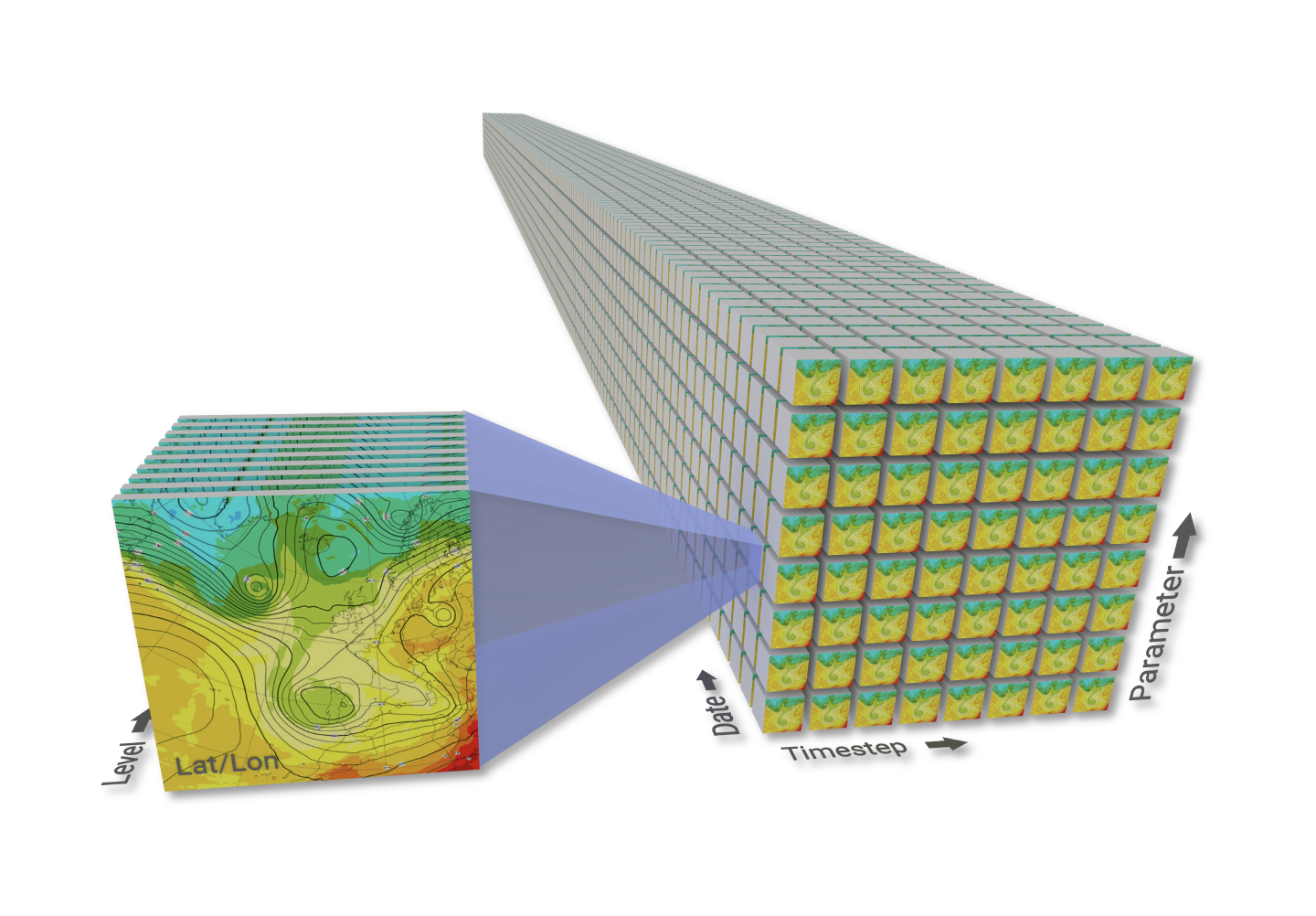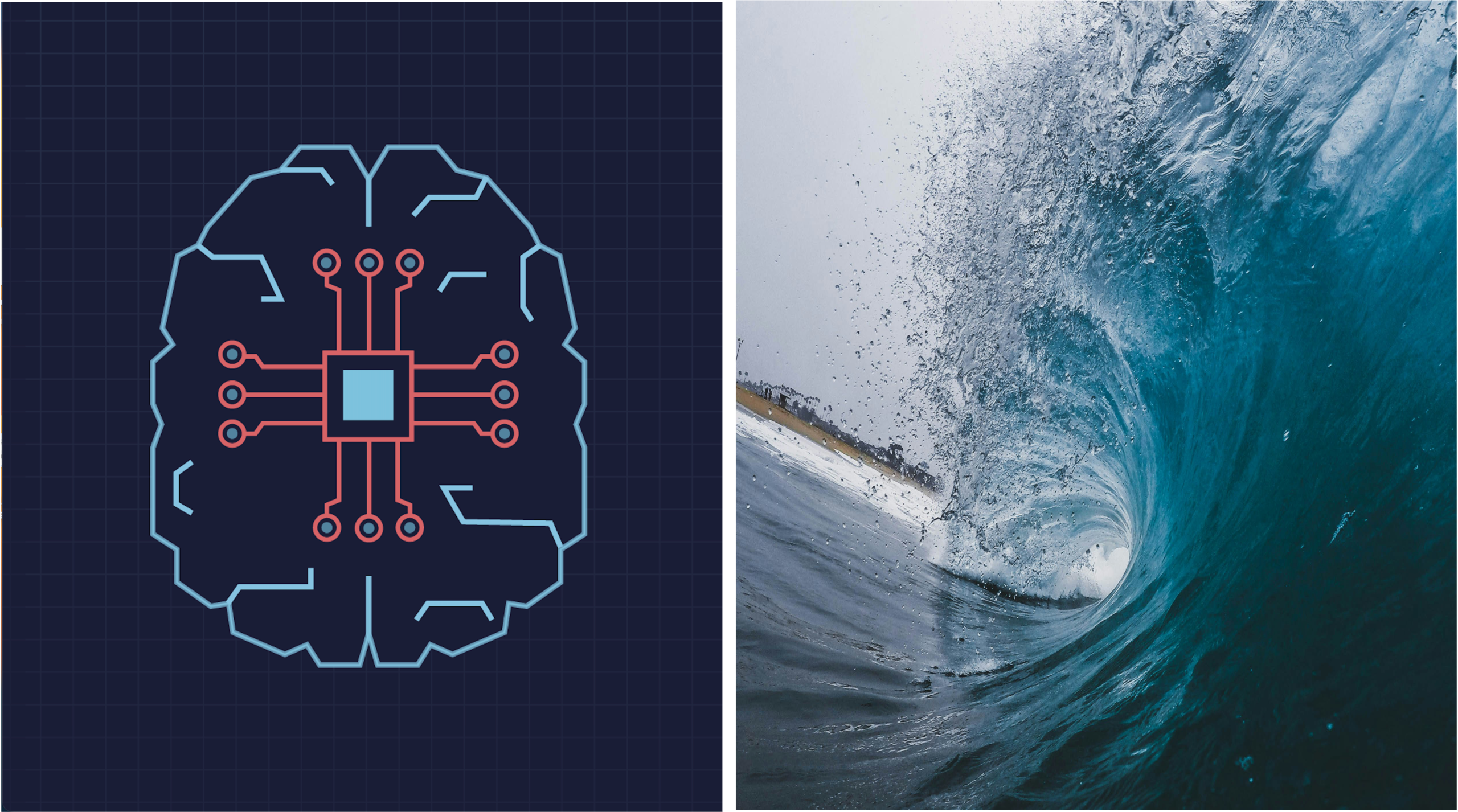
New high-resolution narrated climate story videos -”From Past to Future”- use visual storytelling to replay historical extreme weather events under different climate conditions—revealing how climate change alters their evolution and impacts. Developed within Destination Earth’s Climate Change Adaptation Digital Twin, these videos offer a powerful new way to explore local consequences of global warming.
Unlike conventional climate projections, which typically operate at coarse resolution and offer long-term averages, the Climate DT enables high-resolution, event-based simulations grounded in real meteorological conditions. These so-called kilometer-scale storyline simulations are designed to answer “what-if” questions with local granularity by reproducing the same observed large-scale weather situation under different climate conditions.
The simulations with a global climate model are nudged to observed atmospheric states, ensuring that large-scale features such as the jet stream or storm tracks match reality. At the same time, small-scale features in the atmosphere evolve freely, as do conditions in the ocean, sea ice, and land surface. This makes it possible to explore how certain extreme events change with the background climate.
The videos translate this complexity into a clear visual narrative. They show how climate change can amplify the impacts of individual events, often in subtle but important ways. This kind of visual storytelling is more than a communication tool—it’s a way to make cutting-edge science accessible and relevant to decision-makers and the wider public.


Snapshot from the storyline video “From Past to Future – The Central European Floods, 2024 in a Changing Climate.” The panels compare accumulated precipitation near Vienna under past (1950), present, and future (+2°C) climate conditions. Visualisations like this form the core of the narrated video stories developed within the Climate DT. Credit: AWI Climate DT team.

Explore the videos here:
From Past to Future – The Central European Floods, 2024 in a Changing Climate.” – Storm Boris
From Past to Future – Hurricane Helene in the southeastern United States


The Climate DT storyline simulations are designed with user relevance in mind. They support practical applications across sectors—urban planning, disaster response, policy decision-making, and impact modelling—by providing locally detailed insights into how extreme events may evolve under different climate conditions.

Looking ahead, the storyline approach will expand to cover a wider range of extremes—including marine heatwaves and heatwaves over land—and integrate impact models to better connect climate conditions with real-world consequences in areas such as agriculture, energy, health, and infrastructure. In addition, the development of real-time storylines will enable timely, event-focused insights while extreme events are still unfolding.
As this methodology continues to evolve, it promises to deliver increasingly comprehensive and user-relevant information—bridging the gap between global science and local decision-making, and empowering society to better prepare for the risks ahead.
For further details, read the article:
Replaying Extreme Weather: How Storyline Simulations Help Us Prepare for Climate Change
Destination Earth is a European Union funded initiative launched in 2022, with the aim to build a digital replica of the Earth system by 2030. The initiative is being jointly implemented by three entrusted entities: the European Centre for Medium-Range Weather Forecasts (ECMWF) responsible for the creation of the first two ‘digital twins’ and the ‘Digital Twin Engine’, the European Space Agency (ESA) responsible for building the ‘Core Service Platform’, and the European Organisation for the Exploitation of Meteorological Satellites (EUMETSAT), responsible for the creation of the ‘Data Lake’.
The Climate DT, procured by ECMWF is developed through a contract led by CSC-IT Center forScience and includes, Alfred Wegener Institute Helmholtz Centre for Polar a nd Marine Research (AWI), Barcelona Supercomputing Center (BSC), Max Planck Institute for Meteorology (MPI-M), Institute of Atmospheric Sciences and Climate (CNR-ISAC), German Climate Computing Centre (DKRZ), National Meteorological Service of Germany (DWD), Finnish Meteorological Institute (FMI), Hewlett Packard Enterprise (HPE), Polytechnic University of Turin (POLITO), Catholic University of Louvain (UCL), Helmholtz Centre for Environmental Research (UFZ) and University of Helsinki (UH).
We acknowledge the EuroHPC Joint Undertaking for awarding DestinE strategic access to the EuroHPC supercomputers LUMI, hosted by CSC (Finland) and the LUMI consortium, Marenostrum5, hosted by BSC (Spain) Leonardo, hosted by Cineca (Italy) and MeluXina, hosted by LuxProvide (Luxembourg) through a EuroHPC Special Access call.
More information about Destination Earth is on the Destination Earth website and the EU Commission website.
For more information about ECMWF’s role visit ecmwf.int/DestinE


